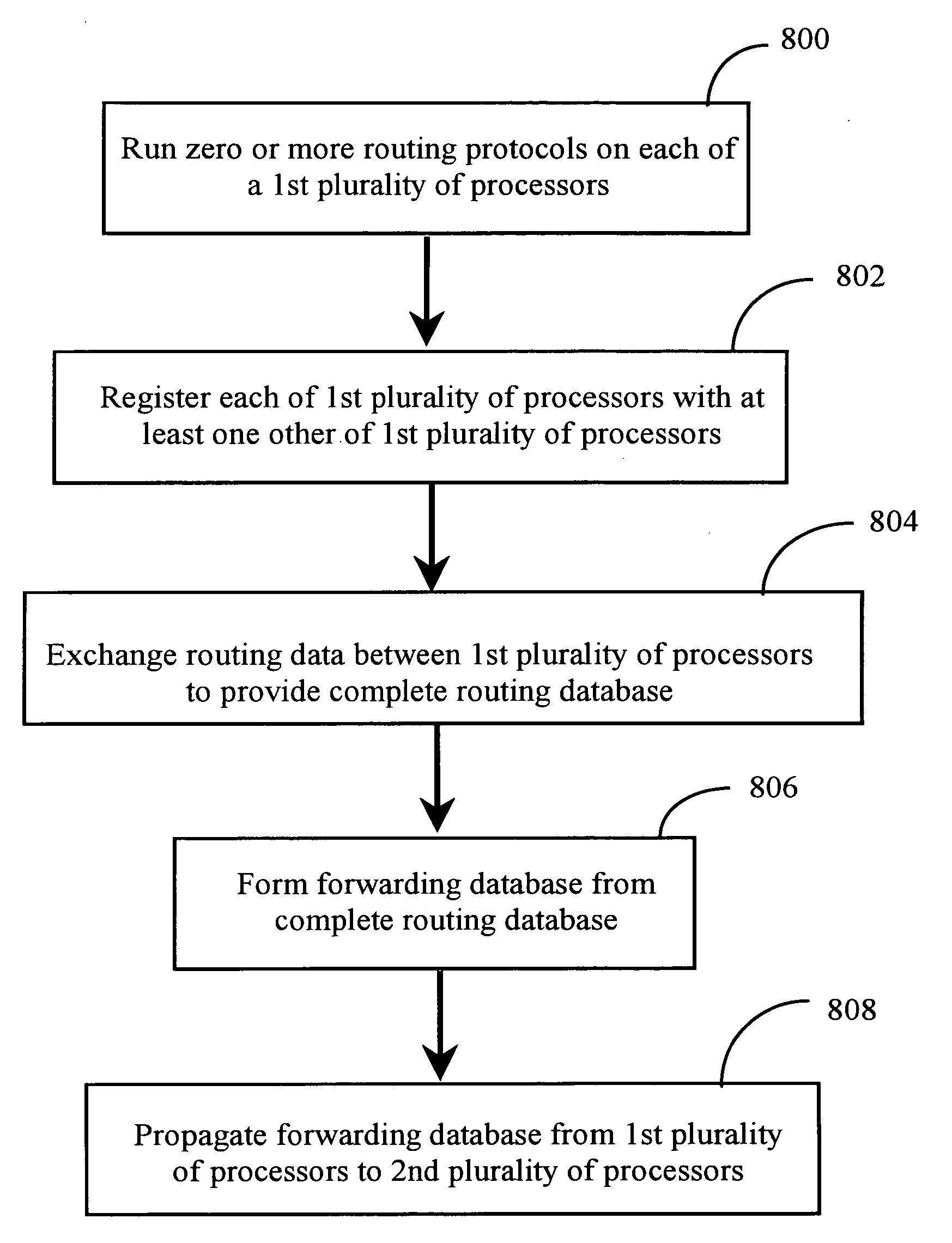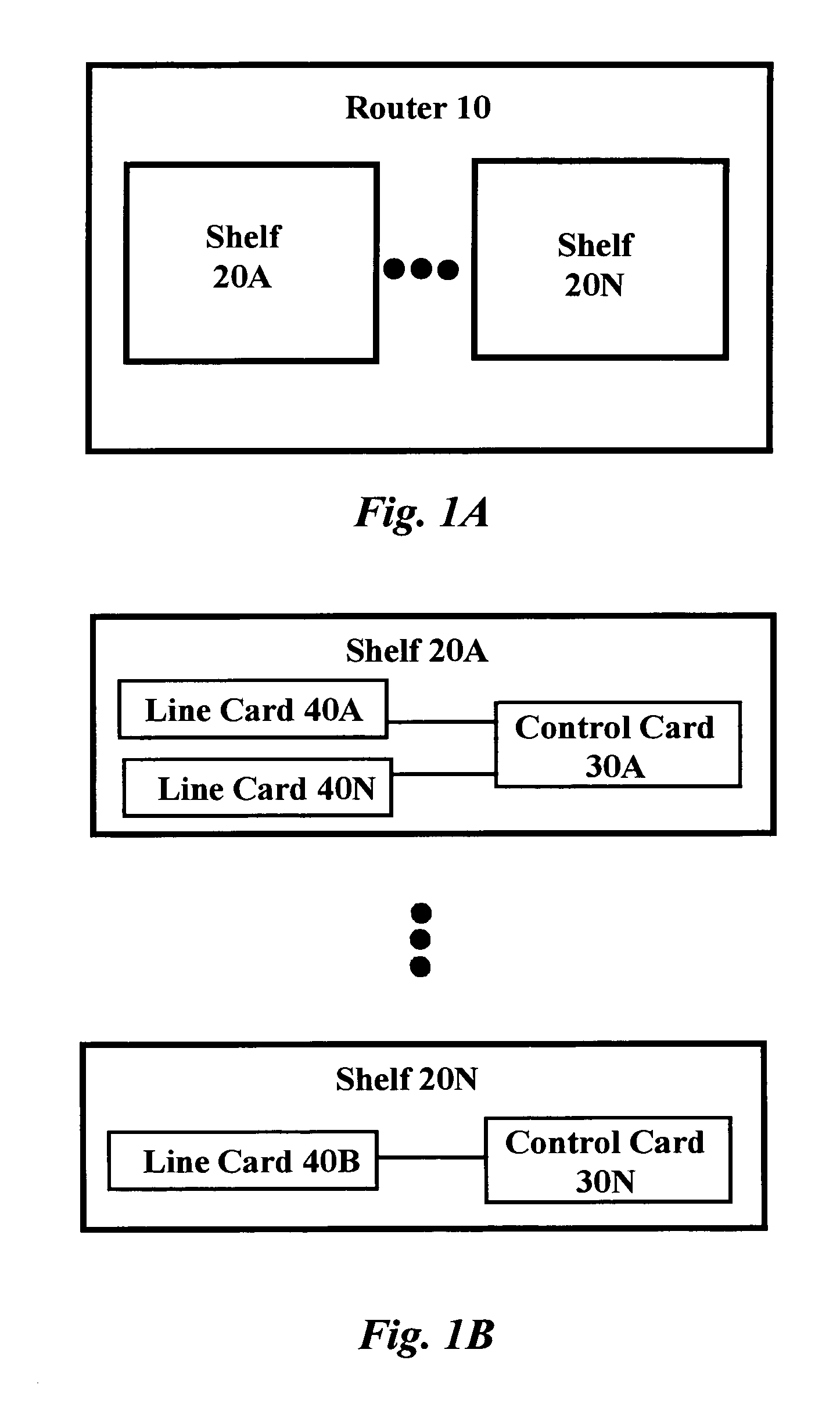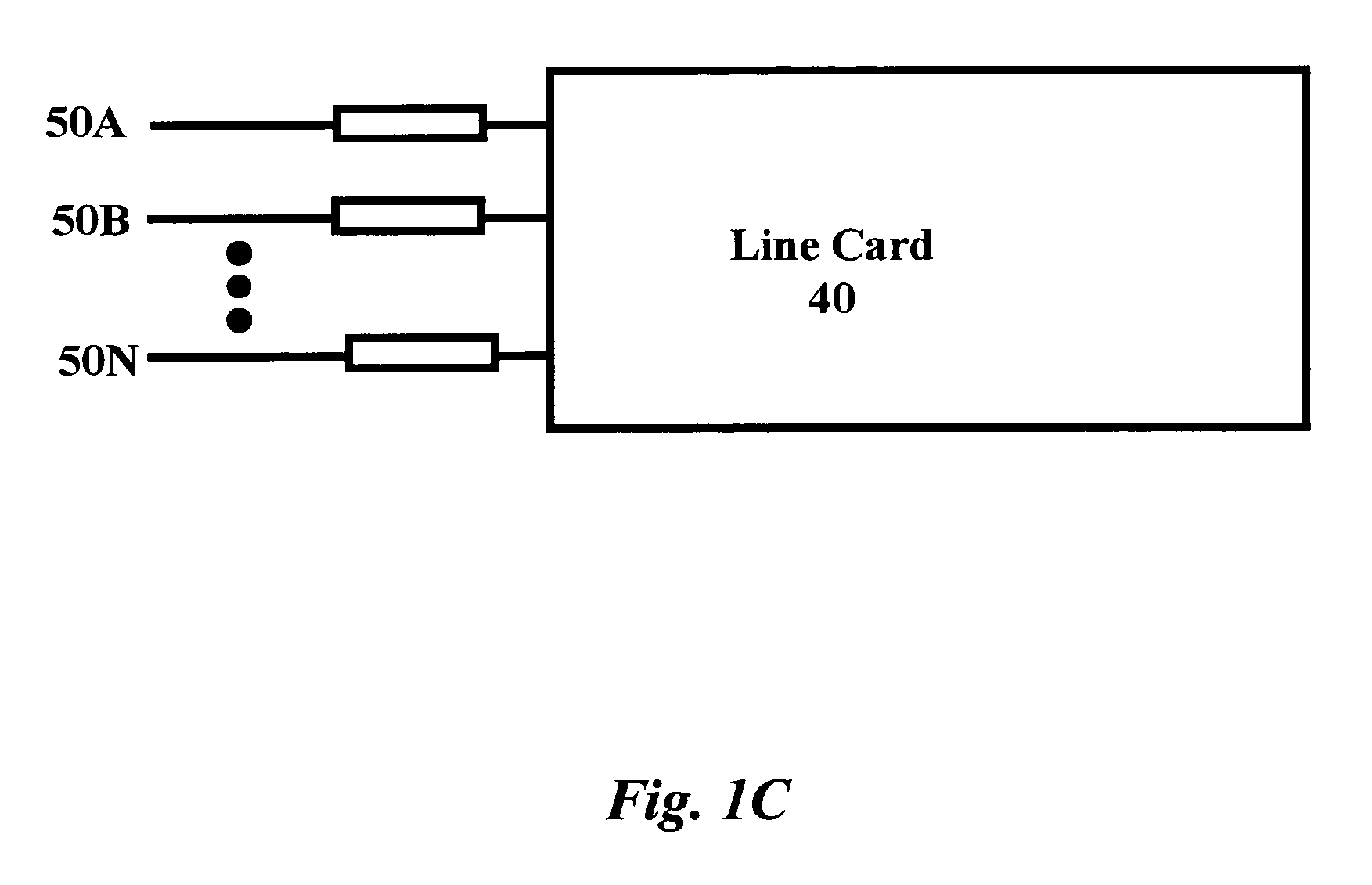Methods and apparatus for synchronizing and propagating distributed routing databases
a distributed routing and database technology, applied in the field of methods and apparatus for synchronizing and propagating distributed routing databases, can solve the problems of routing protocol not re-routing the routing database, the possibility of imposing much higher computational loads on the processor, and the computational power available to the routing protocol is typically limited to a single processor
- Summary
- Abstract
- Description
- Claims
- Application Information
AI Technical Summary
Benefits of technology
Problems solved by technology
Method used
Image
Examples
Embodiment Construction
[0042]In order to place the invention in perspective for the better understanding thereof, there now follows, with reference to FIGS. 1A–1C, a brief description of a scalable router which may be used in conjunction with the instant invention. FIG. 1A is a block diagram showing the basic architecture of a router 10. Each router 10 may include a plurality of shelves, represented in FIG. 1A as 20A to 20N. As shown in FIG. 1B, each shelf 20 can include a plurality of line cards, represented as 40A to 40N. For the purpose of clarity, only two control cards are shown in FIG. 1B; however, it is to be understood that in practice larger numbers of control cards can be used according to the invention. Each control card 30 is in communication with at least one line card 40. For example, control card 30A is shown as being in communication with line cards 40A and 40N on shelf 20A. Again, for the purpose of clarity, only two line cards are shown as being in communication with control card 30A. Ho...
PUM
 Login to View More
Login to View More Abstract
Description
Claims
Application Information
 Login to View More
Login to View More - R&D
- Intellectual Property
- Life Sciences
- Materials
- Tech Scout
- Unparalleled Data Quality
- Higher Quality Content
- 60% Fewer Hallucinations
Browse by: Latest US Patents, China's latest patents, Technical Efficacy Thesaurus, Application Domain, Technology Topic, Popular Technical Reports.
© 2025 PatSnap. All rights reserved.Legal|Privacy policy|Modern Slavery Act Transparency Statement|Sitemap|About US| Contact US: help@patsnap.com



